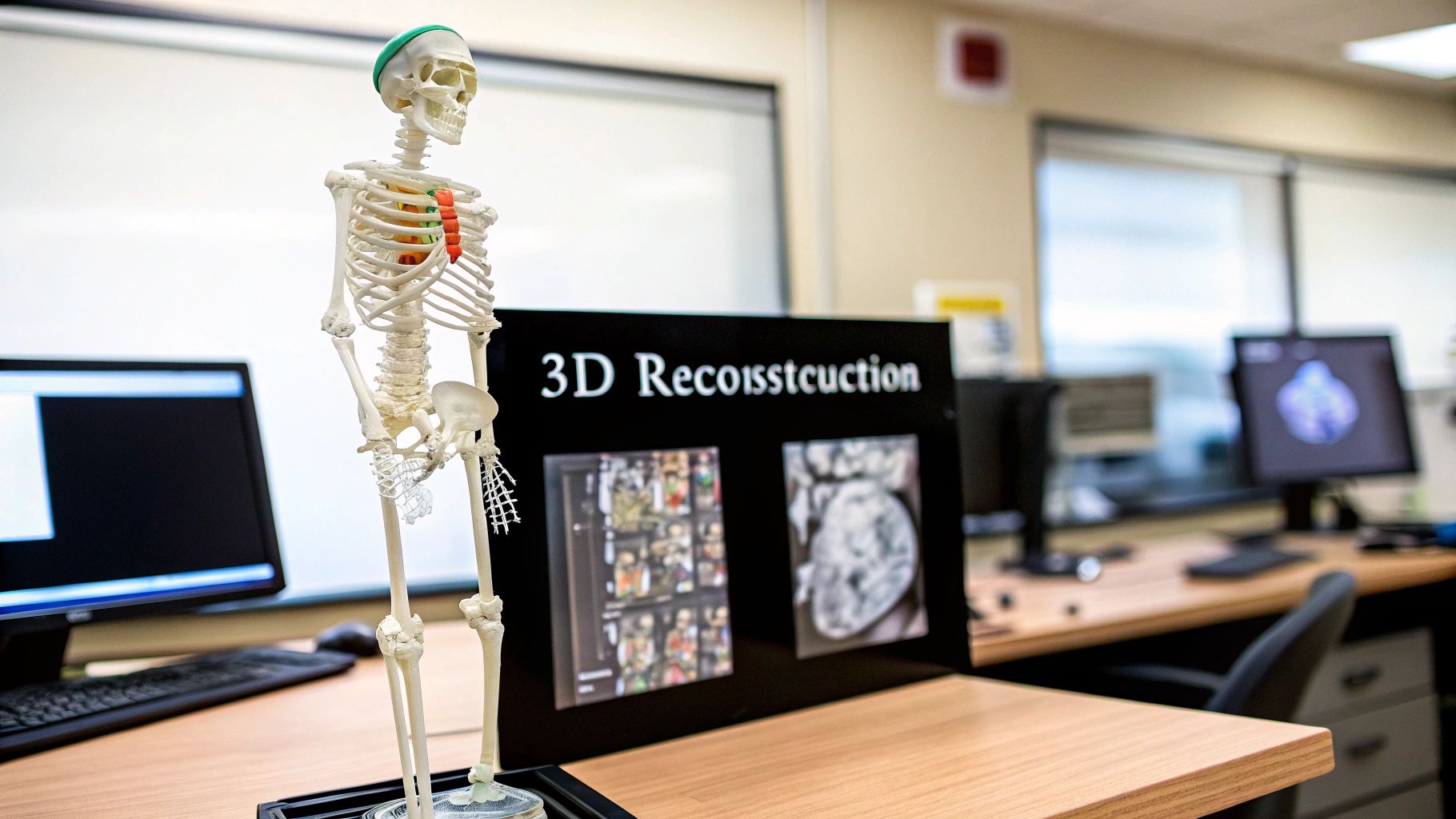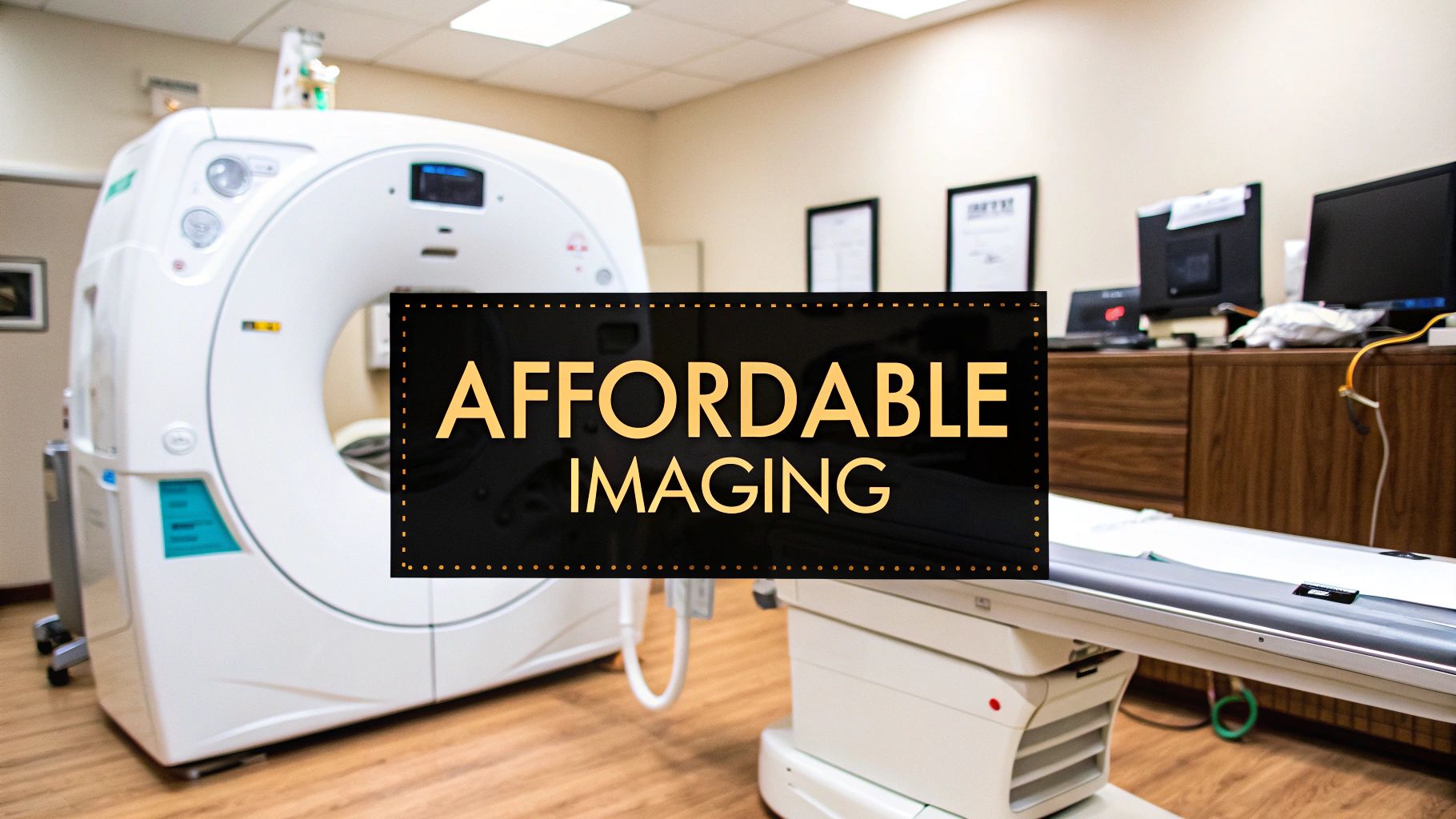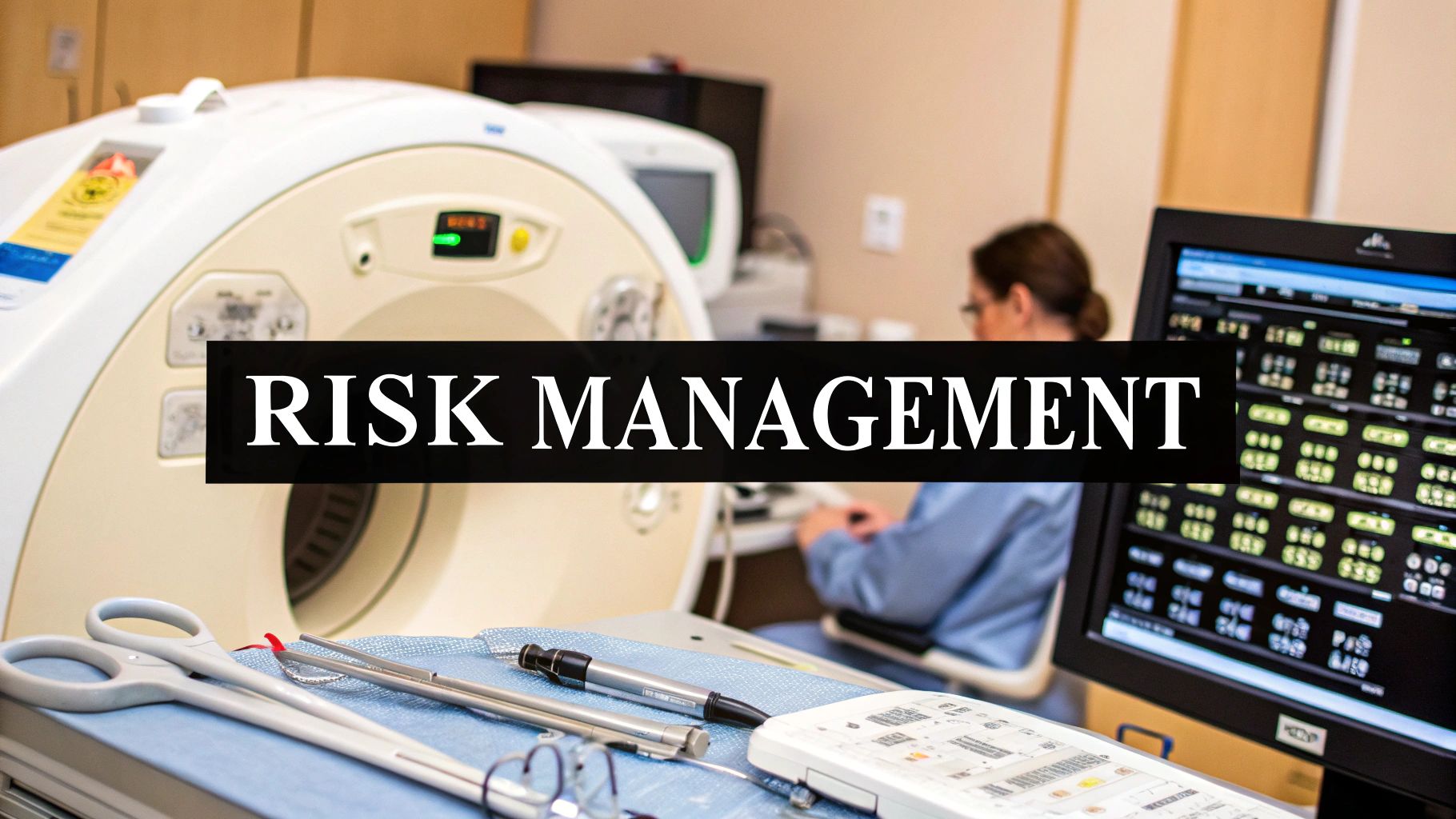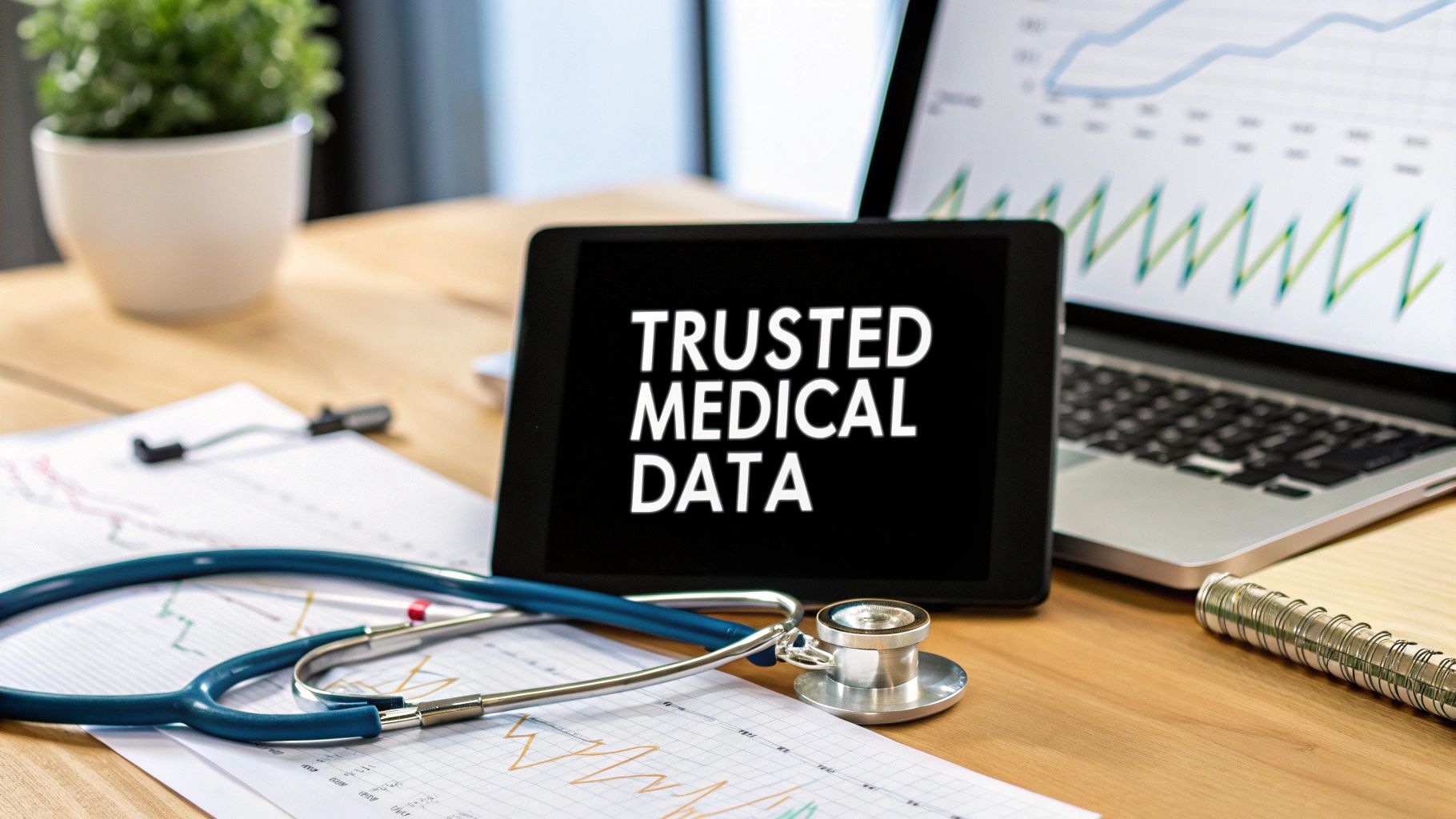The Essentials of Medical Device Software Validation
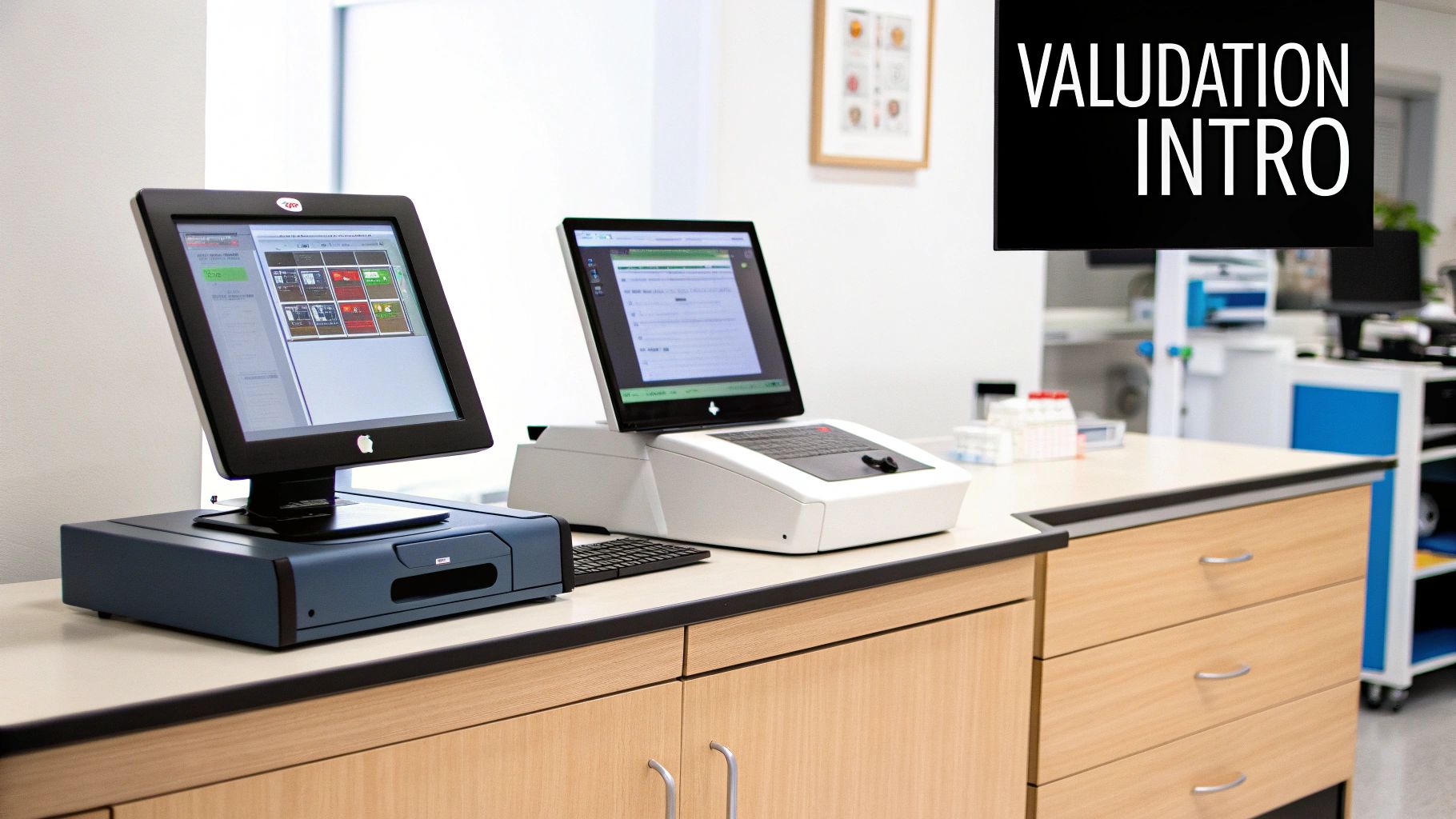
Medical device software validation is crucial for both patient safety and regulatory compliance. It's the process of ensuring software consistently performs its intended function in a real-world clinical environment. This differs from verification, which simply checks if the software operates according to specifications. Validation confirms the software effectively addresses the clinical need it was designed for. Verification is “building the system right,” while validation is “building the right system.”
This distinction is critical in healthcare, where software failures can have serious repercussions. A software error in an insulin pump, for example, could result in an incorrect dosage. That’s why validation focuses on real-world performance, evaluating usability by healthcare professionals, interaction with other medical devices, and overall impact on patient outcomes.
Software validation is mandatory for all medical devices in the U.S., as mandated by the FDA. This requires documented evidence of compliance, involving a validation plan, software requirements specifications, and comprehensive testing. This process is essential for preventing software-related failures, a leading cause of medical device recalls. Over 20% of recalls are due to software issues. For more detailed information, check out this resource: Learn more about medical device recalls and software validation.
Key Differences Between Verification and Validation
To further illustrate this important difference, here's a breakdown of verification vs. validation:
-
Verification: Focuses on the software development process itself. It asks, "Does the software meet the pre-defined specifications?" Activities include code reviews, unit testing, and integration testing.
-
Validation: Focuses on real-world software performance. It asks, "Does the software meet user needs and its intended use?" Activities include user acceptance testing, clinical trials, and post-market surveillance.
This rigorous approach to validation not only protects patients but also safeguards medical device manufacturers from costly recalls, legal challenges, and reputational damage. It builds trust with both healthcare providers and patients, ensuring medical devices are safe and effective.
Navigating the Regulatory Maze With Confidence
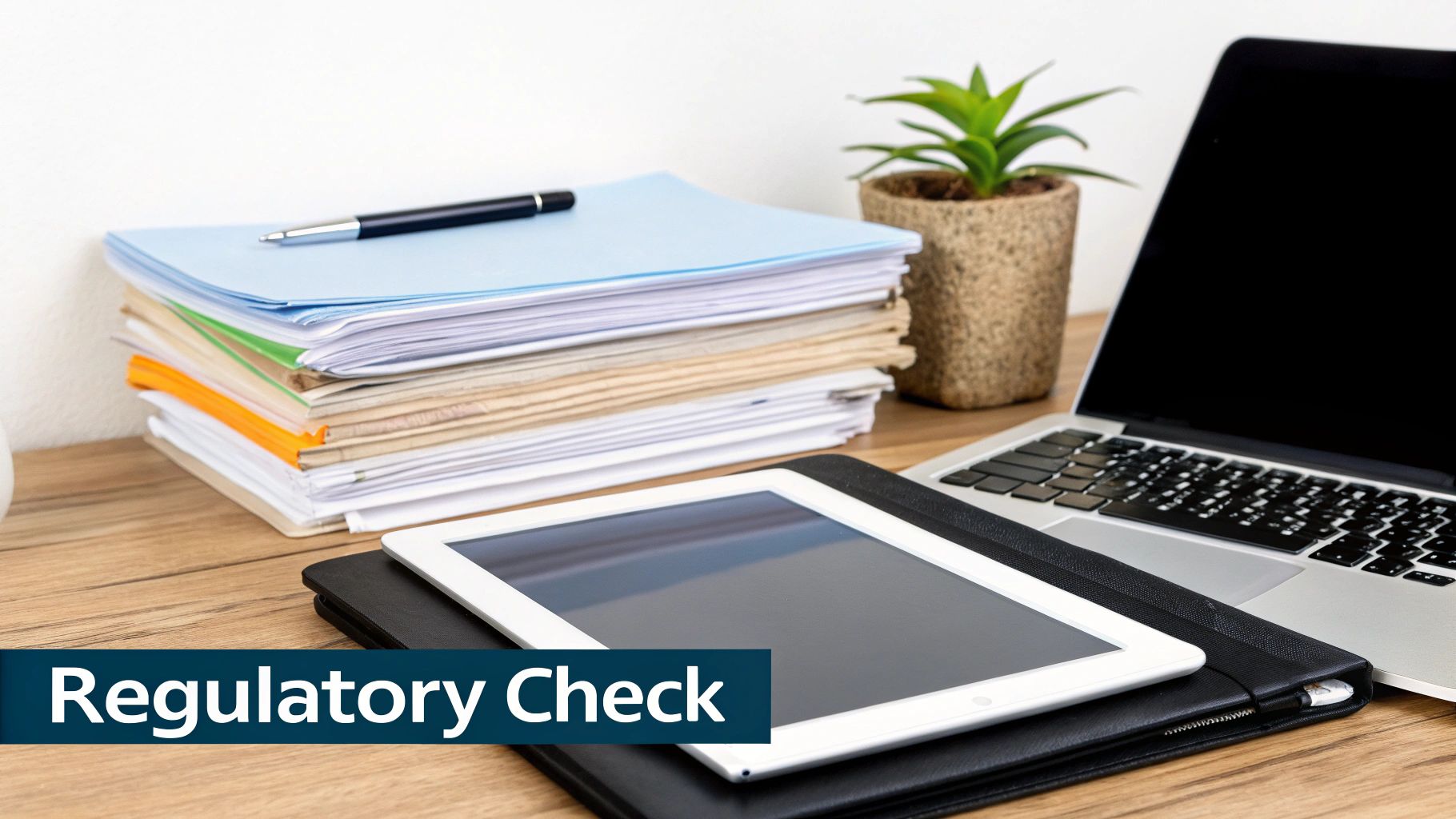
The regulatory landscape for medical device software validation can be complex. However, with a clear understanding of the key standards and guidelines, the process becomes much more manageable. This involves understanding not only what requires validation, but also how to demonstrate that validation to regulatory bodies. A well-defined validation strategy can streamline your efforts and prevent unnecessary work duplication when addressing multiple regulatory frameworks.
Understanding the applicable regulations is essential for successfully bringing your medical device software to market. This involves navigating a complex interplay of regional and international standards. A proactive approach to compliance can save time and resources in the long run.
Understanding Key Regulatory Frameworks
Different regions have distinct regulatory bodies and requirements. Successfully navigating this complex "maze" often requires a strategy that satisfies multiple authorities without redundant effort. For instance, aligning your processes with internationally recognized standards, such as IEC 62304, can simplify compliance with both U.S. FDA and EU MDR requirements.
To help clarify the landscape, let's explore the key standards governing medical device software validation across different regions:
To help illustrate the key regulatory frameworks, the following table provides a comparison:
Key Regulatory Standards for Medical Device Software: A comprehensive comparison of major regulatory frameworks and standards governing medical device software validation across different regions.
| Regulatory Standard | Region | Scope | Key Requirements | Documentation Needs |
|---|---|---|---|---|
| FDA's General Principles of Software Validation | U.S. | Software used in medical devices | Validation throughout the software development lifecycle | Validation plans, test protocols, risk assessments |
| EU MDR (Medical Device Regulation) | EU | Software used in medical devices | Software validation as part of the development lifecycle | Technical documentation, clinical evaluation reports |
| IEC 62304 | International | Medical device software lifecycle processes | Risk management, software development process requirements | Software development plan, risk management file, software requirements specification |
| ISO 13485 | International | Quality management systems for medical devices | Quality system requirements, risk management | Quality manual, procedures, records |
This table highlights the key regulatory frameworks and their specific requirements. Aligning your processes with these frameworks can streamline your validation efforts and help ensure compliance across multiple regions.
Documentation and Risk Classification
Effective documentation is critically important. Auditors focus on specific documentation to verify compliance. Understanding the essential documents—validation plans, test protocols, and risk assessments—allows you to prioritize and avoid generating unnecessary paperwork.
Furthermore, regulatory requirements vary based on the risk classification of the device. A Class III device, like a pacemaker, demands a far more rigorous validation process than a Class I device, such as a bandage. This means your validation strategy should be proportionate to the potential risks associated with the software.
Building Compliance Into Your Process
Instead of viewing compliance as a separate task, integrate it directly into your software development lifecycle. This proactive approach, often referred to as "baking in" compliance, significantly reduces the need for costly rework later. Building a risk-aware culture within the development team promotes the proactive identification and mitigation of potential issues.
For example, incorporating regular code reviews and automated testing throughout development helps identify and address defects early. This proactive approach not only streamlines the validation process, but also contributes to higher software quality and improved patient safety. Ultimately, a robust validation strategy instills confidence in your product, ensures patient well-being, and facilitates successful market access.
Mastering the Medical Device Software Validation Lifecycle
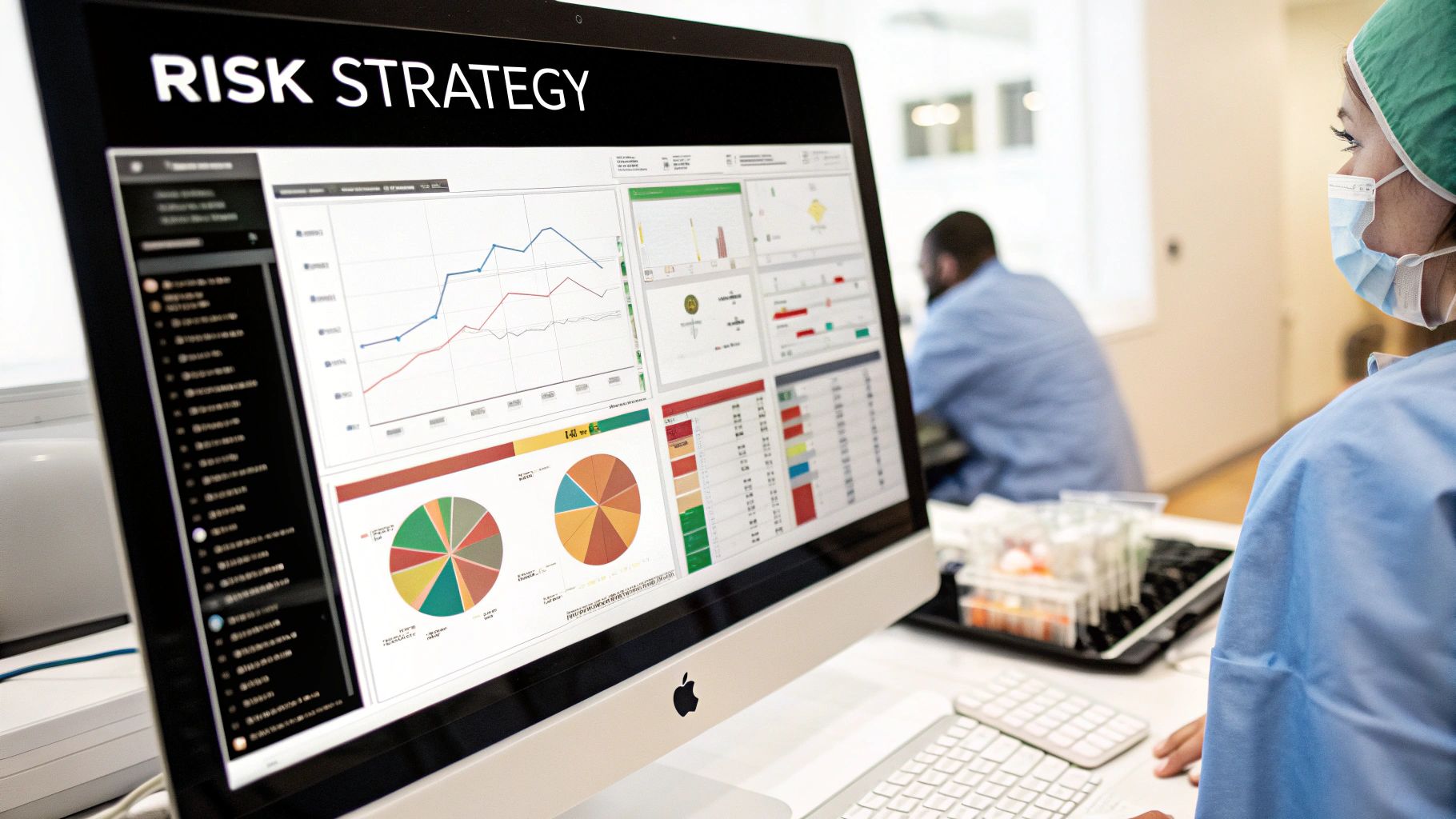
Ensuring patient safety and regulatory compliance in the medical device industry hinges on a deep understanding of the software validation lifecycle. This goes beyond theoretical knowledge; it requires a practical roadmap for effective implementation. This section provides that roadmap, offering valuable insights into how leading medical device companies achieve both thoroughness and efficiency in their validation processes.
The medical device software market is experiencing significant growth, reaching $24.29 billion in 2023. Projections indicate it will reach $30.4 billion by 2024, demonstrating a 25.2% compound annual growth rate (CAGR). This growth highlights the increasing role of software in healthcare, intensifying the need for robust validation to meet regulations like those of the FDA and EU MDR. For a deeper dive into these market statistics, explore the growing medical device software market. This rapid expansion makes mastering the validation lifecycle even more critical.
Developing Effective Validation Plans
A practical validation plan is the cornerstone of the entire validation process. It should serve as a dynamic tool guiding the development team, not just a static document for audits. A well-structured plan clearly defines the scope of validation, outlines roles and responsibilities, and specifies the testing methodologies. Crucially, it also establishes clear acceptance criteria to eliminate ambiguity.
Creating Meaningful Requirements Specifications
Clear requirements are the bedrock of successful validation. These specifications translate clinical needs into tangible, testable criteria for the software. Each requirement should adhere to the SMART principle: Specific, Measurable, Achievable, Relevant, and Time-bound. Maintaining traceability throughout the lifecycle, linking requirements to test cases and validation results, is also essential.
Establishing Robust Test Protocols
Testing is the core of software validation for medical devices. Robust test protocols go beyond simply verifying functionality; they rigorously challenge the software under realistic clinical conditions. This includes testing edge cases and potential failure points. For example, testing an insulin pump might involve scenarios with fluctuating blood glucose levels, varying battery life, and potential user errors.
Managing Validation in Agile Environments
Many medical device companies have embraced Agile development methodologies. However, integrating validation into agile workflows can be challenging. A successful strategy involves incorporating validation activities within each sprint. This fosters continuous compliance, preventing validation from becoming an afterthought and enabling early detection and correction of defects, minimizing costly rework.
Validating Software Updates Efficiently
Software updates are a constant in the evolving landscape of medical devices. Validating every update from scratch isn't feasible. A risk-based approach is more practical, determining the scope of re-validation based on the update's potential impact. Minor updates with limited impact on patient safety might require less extensive testing, while major updates or those affecting critical functionality necessitate a more thorough validation process. This ensures efficient validation without compromising safety or compliance.
Risk-Based Approaches That Actually Protect Patients
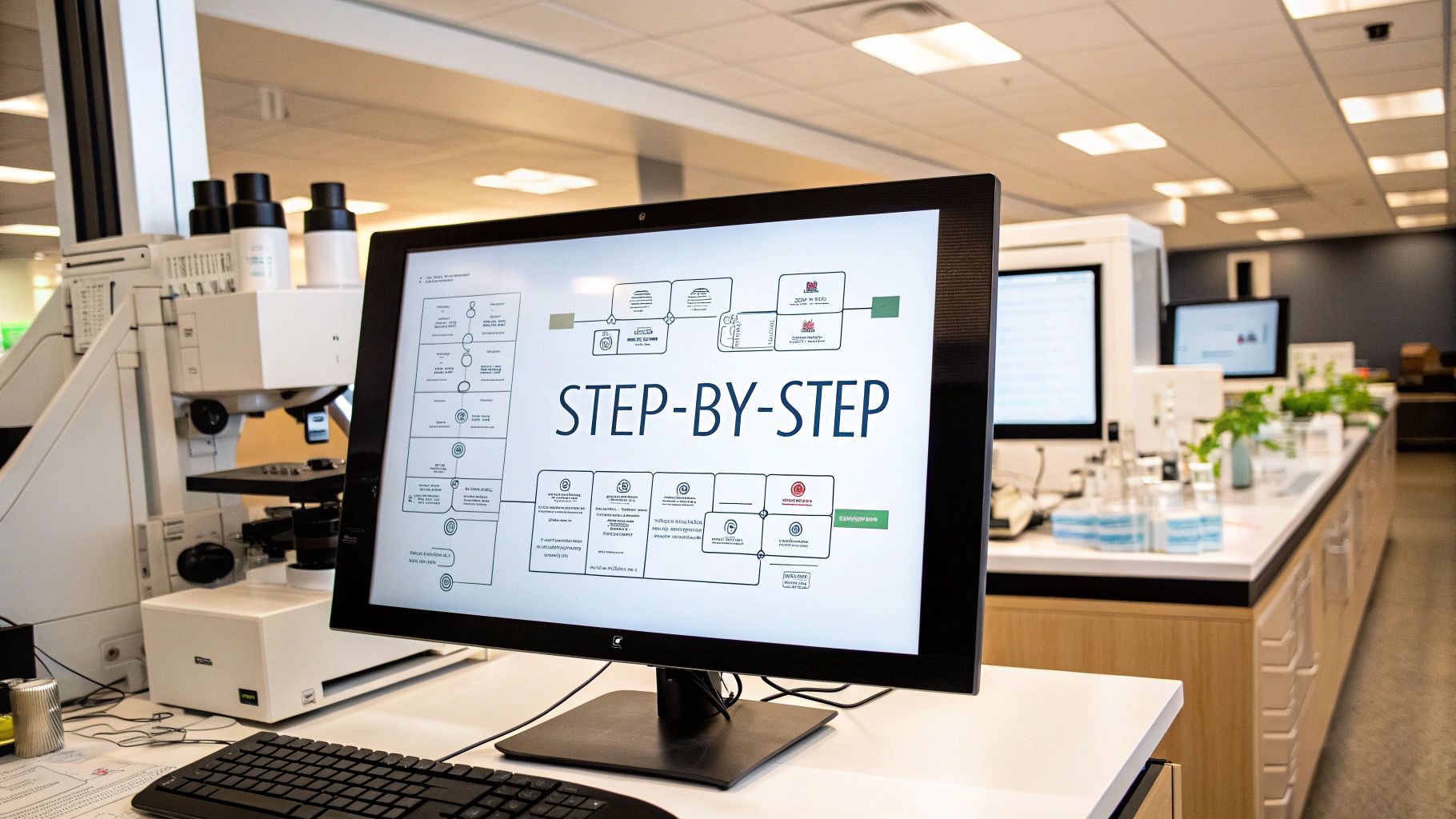
For medical device software validation, shifting away from a simple checklist mentality to a truly patient-centric approach is critical for risk management. Leading medical device companies recognize that integrating meaningful risk assessment throughout the entire validation lifecycle is key to truly enhancing patient safety. This proactive stance not only minimizes potential harm but also bolsters the overall quality and reliability of the software.
This involves moving beyond simply ticking off potential hazards on a list. Instead, it necessitates understanding the real-world clinical scenarios where these hazards could actually occur. Consider an insulin pump as an example. While a software error might be identified as a hazard, the risk assessment should delve into how that error could impact a patient under various conditions like exercise, sleep, or periods of stress.
The medical device industry has a history of grappling with software-related failures. Between 1983 and 1997, 383 software-related medical device recalls occurred, with 30% concentrated between 1994 and 1996 – a period marked by the rapid integration of software into these devices. Find more detailed statistics here. This highlights the crucial role of risk management in medical device software validation.
Identifying and Mitigating Software Hazards
Effective risk management in medical device software encompasses both the identification and mitigation of software hazards. This means implementing controls designed to function effectively in real-world scenarios. For example, if a software hazard in an insulin pump could lead to an overdose, a risk control might include a maximum dosage limit programmed directly into the software.
-
Hazard Analysis: Systematically identify potential hazards associated with the software.
-
Risk Evaluation: Assess the likelihood and potential impact of each hazard on patient well-being.
-
Risk Control: Implement measures to reduce the likelihood or lessen the impact of identified hazards.
-
Risk Monitoring: Continuously monitor and evaluate the effectiveness of the established risk controls.
Documentation and Regulatory Compliance
Documenting your risk-based approach is essential for demonstrating compliance to regulatory bodies. This documentation, however, shouldn't be overly complex. Focus on clear, concise records that directly link identified hazards, their associated risks, and the implemented mitigation controls. This approach not only satisfies regulatory requirements but also provides valuable insights for the development team.
Building a Risk-Aware Culture
A crucial aspect of effective risk management is cultivating a risk-aware culture within the development team. This means empowering every team member to proactively identify and address potential risks throughout the software development lifecycle. This fosters a sense of shared responsibility for patient safety and encourages continuous improvement of risk management practices.
Ultimately, effective risk management isn't just a regulatory requirement; it's a competitive advantage. It enables companies to develop safer, more reliable medical device software, build trust with healthcare providers and patients, and contribute to better patient outcomes. This also allows companies to stand out in a market increasingly focused on safety and quality.
Testing Strategies That Find Real Problems
Robust medical device software validation requires moving beyond generic testing approaches. Successful companies prioritize designing testing protocols that uncover significant issues before they affect patients. This means developing test cases that realistically challenge the software under real-life clinical scenarios, going beyond simply confirming basic functionality. This proactive testing approach is vital for ensuring patient safety and minimizing the risk of costly recalls or legal complications.
Consider this analogy: testing your car's brakes on a flat, empty road reveals little about their performance in an emergency. Likewise, testing medical device software under ideal conditions doesn't demonstrate how it will function in the complexities of a real clinical setting.
Testing at the Boundaries
Software failures often occur at the edges of a system's capabilities. Therefore, effective medical device software validation emphasizes boundary testing. This involves pushing the software to its limits to identify vulnerabilities. For instance, if a blood glucose meter specifies an operating temperature range, testing should include temperatures at both the upper and lower limits of that range. This helps pinpoint potential issues that might arise in extreme, yet plausible, clinical situations.
Load testing is also essential. It evaluates the software's performance under peak demand, simulating the stress of a busy hospital. This might involve multiple users accessing the software concurrently or processing a large volume of patient data.
Validating in Integrated Systems
Medical devices frequently operate within complex, interconnected systems. This adds another layer of complexity to validation, demanding tests that assess software performance within its intended ecosystem, not just in isolation. For example, new imaging software must be tested integrated with a hospital's existing PACS (Picture Archiving and Communication System) network, not just on its own. This verifies accurate and efficient communication with other systems.
To further clarify the different testing methodologies utilized in medical device software development, the following table provides a comparison of various approaches.
Medical Device Software Testing Methods Comparison
| Testing Method | Purpose | When to Use | Documentation Required | Automation Potential | Regulatory Considerations |
|---|---|---|---|---|---|
| Unit Testing | Verify individual components of the software | During development, before integration testing | Detailed test scripts and results for each unit | High | Required by regulatory standards for demonstrating software functionality |
| Integration Testing | Verify interaction between different software modules | After unit testing, before system testing | Test plans, test cases, and results covering integrated functionality | Medium | Essential for ensuring interoperability within the system |
| System Testing | Verify the complete software system as a whole | After integration testing, before user acceptance testing | Comprehensive test plans, procedures, and reports | Medium | Required for demonstrating overall system performance |
| User Acceptance Testing (UAT) | Validate the software meets user needs and specified requirements | Before final release | Test plans, user feedback, and acceptance reports | Low | Important for confirming usability and fitness for intended use |
| Performance Testing | Evaluate software responsiveness, stability, and scalability | Throughout development lifecycle, particularly before release | Test plans, performance metrics (e.g., response times), and analysis reports | High | Crucial for ensuring the software can handle real-world clinical demands |
| Security Testing | Identify vulnerabilities and protect against unauthorized access | Throughout development lifecycle | Security assessment reports, penetration testing results, and remediation plans | Medium | Essential for safeguarding patient data and system integrity |
This table highlights the crucial differences between various software testing methods, illustrating when each method is most appropriate and the documentation typically required. The level of automation potential and regulatory considerations are also noted, offering a comprehensive overview of the testing landscape for medical device software.
Automation That Enhances Human Judgment
While automated testing offers considerable value, it shouldn't replace human judgment. Automated tests excel at repetitive tasks and checking for known issues. However, human testers provide critical thinking, enabling them to explore unexpected scenarios and identify subtle problems that automated tests might overlook. Combining automated and manual testing ensures a more thorough validation process.
Recreating the Clinical Setting
Test environments should accurately represent real clinical settings. This includes using comparable hardware, mimicking real-world data inputs, and even simulating user interactions. The closer the test environment mirrors reality, the more reliable the results and the greater the confidence in the software's real-world performance. Instead of relying solely on simulated data, validation should include real patient data whenever possible, anonymized to protect patient privacy.
Traceability and Documentation
Maintaining complete traceability between requirements and test results is fundamental. This confirms that each requirement has been thoroughly tested and validated. This meticulous documentation acts as evidence of compliance for regulatory bodies and supports ongoing maintenance and software improvement. While initially time-consuming, a robust documentation process ultimately saves significant time and resources by preventing the need to repeat tests or re-validate requirements.
Documentation That Satisfies Auditors Without Crushing Teams
Thorough documentation is essential for medical device software validation. However, creating these crucial documents doesn't have to overwhelm your team. Successful medical device companies strategically balance regulatory requirements with efficient workflows. This involves prioritizing quality over quantity and using technology to streamline processes.
Practical Approaches to Validation Documents
Effective validation documents serve a dual purpose: demonstrating compliance and guiding the development process. These documents should be clear, concise, and easily accessible, benefiting both auditors and the development team. Using templates and examples provides a consistent framework, saving time and effort. Adapt these templates to your specific organizational needs to ensure relevance and practicality.
-
Validation Plan: This document outlines the overall validation strategy. It covers the scope of the validation, its objectives, and the responsibilities of each team member.
-
Software Requirements Specifications: This document details the functional and non-functional requirements the software must meet. It ensures everyone understands the software’s intended purpose and capabilities.
-
Test Protocols: These documents describe the specific tests conducted during validation. They include the expected results, the acceptance criteria, and the procedures followed.
-
Traceability Matrix: This document links requirements to test cases and validation results. It ensures complete coverage and demonstrates that all requirements have been addressed.
Maintaining Traceability Throughout the Validation Process
Traceability is critical for demonstrating that each requirement has undergone thorough validation. This involves meticulously documenting the connections between requirements, test cases, and the resulting outcomes. A traceability matrix, whether managed manually or electronically, acts as a roadmap. It connects each requirement to its corresponding test case and result. This clear linkage simplifies the auditor's verification process and helps development teams understand the impact of any changes.
Streamlining Document Review Cycles
Efficient review cycles are crucial for keeping the validation process on schedule. This necessitates clear communication and effective collaboration among reviewers. Establishing well-defined review criteria and timelines upfront streamlines the process considerably. Electronic document management systems can further expedite reviews. They offer features like version control, automated notifications, and collaborative review tools, reducing delays and ensuring efficient feedback integration.
Leveraging Electronic Systems Effectively
Electronic systems are invaluable for simplifying and enhancing documentation processes. These systems enable efficient document storage, retrieval, and version control. They also facilitate collaboration and streamline review cycles, improving overall efficiency.
-
Document Management Systems: These platforms centralize documentation, enabling version control, access control, and streamlined workflows. They provide a single source of truth for all validation documents.
-
Electronic Testing Tools: Automated testing software like Selenium manages test cases, executes tests, and generates reports, reducing manual effort and promoting consistency.
-
Traceability Management Tools: These systems maintain the links between requirements, tests, and results. They facilitate efficient traceability and impact analysis, helping manage changes effectively.
By adopting these strategies, medical device companies can create thorough, compliant documentation without being overwhelmed. This balanced approach ensures regulatory satisfaction while maintaining development team productivity. The result is a more streamlined, efficient validation process that benefits the company and the patients it serves.
Overcoming Real-World Validation Challenges
Medical device software validation is a complex undertaking, presenting numerous challenges that can be daunting even for experienced professionals. This section explores common hurdles and offers practical solutions based on industry best practices. We'll discuss strategies for validating AI and machine learning components, managing validation with limited resources, handling legacy software, validating cloud-based systems, and staying compliant with evolving technologies.
Validating AI and Machine Learning Components
The increasing integration of Artificial Intelligence (AI) and Machine Learning (ML) in medical devices introduces unique validation challenges. Unlike traditional software with predictable, deterministic behavior, AI/ML systems learn and adapt, making their behavior less predictable. This necessitates a different validation approach.
The focus shifts to demonstrating the algorithm's performance across a diverse range of representative clinical data. This includes evaluating not only accuracy but also robustness, bias, and the potential for unintended consequences. Thorough testing and analysis are crucial for ensuring the safety and reliability of AI/ML-driven medical devices.
Managing Validation With Limited Resources
Resource constraints are a common challenge, especially for startups. Effectively managing validation with a small team and limited budget requires careful prioritization based on risk.
Consider leveraging automated testing tools like Selenium to improve efficiency. Focus testing efforts on high-risk areas, and strategically outsource certain validation activities when necessary. Finding the right balance between cost-effectiveness and comprehensive validation is essential for success.
Handling Legacy Software
Many medical devices rely on legacy software systems, which can present significant validation challenges. Documentation may be incomplete, and the original developers may no longer be available.
A practical approach involves prioritizing critical functionalities for validation, conducting thorough risk assessments, and developing comprehensive documentation for the existing system. Where feasible, migrating to newer platforms or modernizing the software architecture should be considered.
Validating Cloud-Based Systems
The growing adoption of cloud-based systems for medical devices introduces new validation considerations. Data security, privacy, and system availability become paramount.
Validation must address not only the software functionality but also the security of the cloud infrastructure, the reliability of data storage and retrieval, and compliance with regulations like HIPAA and GDPR. A robust security strategy is crucial for protecting sensitive patient data.
Staying Compliant With Evolving Technologies
The rapid pace of technological advancement in the medical device industry makes maintaining compliance a continuous challenge. Regulatory requirements and industry standards are constantly evolving.
A proactive approach is essential. This involves actively monitoring regulatory updates, participating in industry forums, and continuously adapting validation processes to meet emerging standards. This ongoing engagement ensures compliance and minimizes the risk of disruptive changes in the future.
Future-Proofing Your Validation Approach
To effectively navigate the ever-changing validation landscape, a forward-looking perspective is essential. Embrace Continuous Integration and Continuous Delivery (CI/CD) practices. Integrating validation activities within the CI/CD pipeline enables continuous compliance, ensuring that software updates are validated throughout the development process, rather than as an afterthought.
By understanding these real-world validation challenges and implementing these strategies, medical device companies can navigate the complexities of software validation. This proactive approach not only ensures patient safety and regulatory compliance but also contributes to greater efficiency and cost-effectiveness throughout the software development lifecycle.
Looking to optimize your medical device software validation process? PYCAD provides comprehensive AI solutions tailored for medical imaging, helping you navigate these validation challenges effectively. From data handling and model training to deployment and support, PYCAD helps streamline your validation efforts, ensuring compliance and accelerating time to market. Learn more about how PYCAD can enhance your validation strategy by visiting https://pycad.co.


